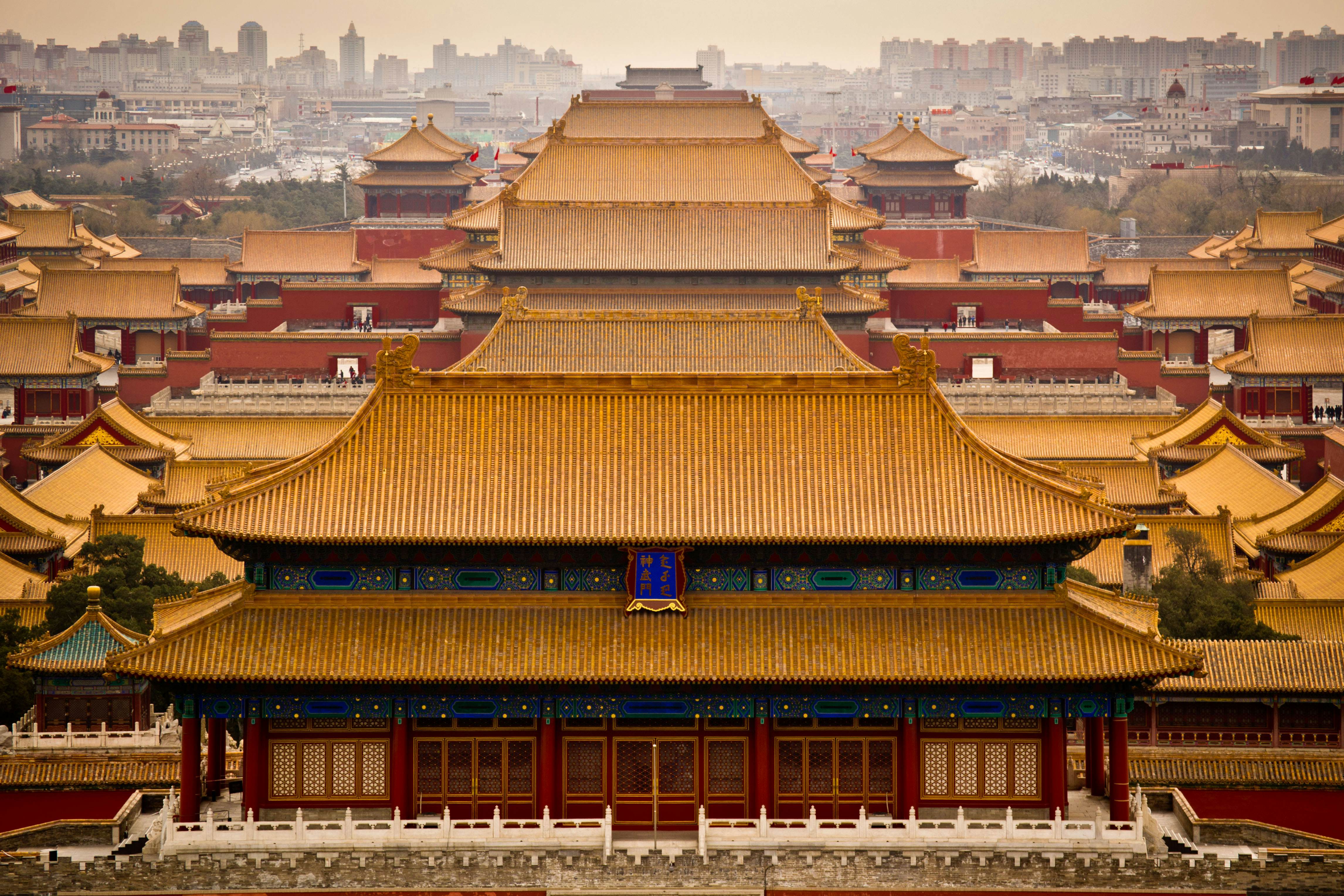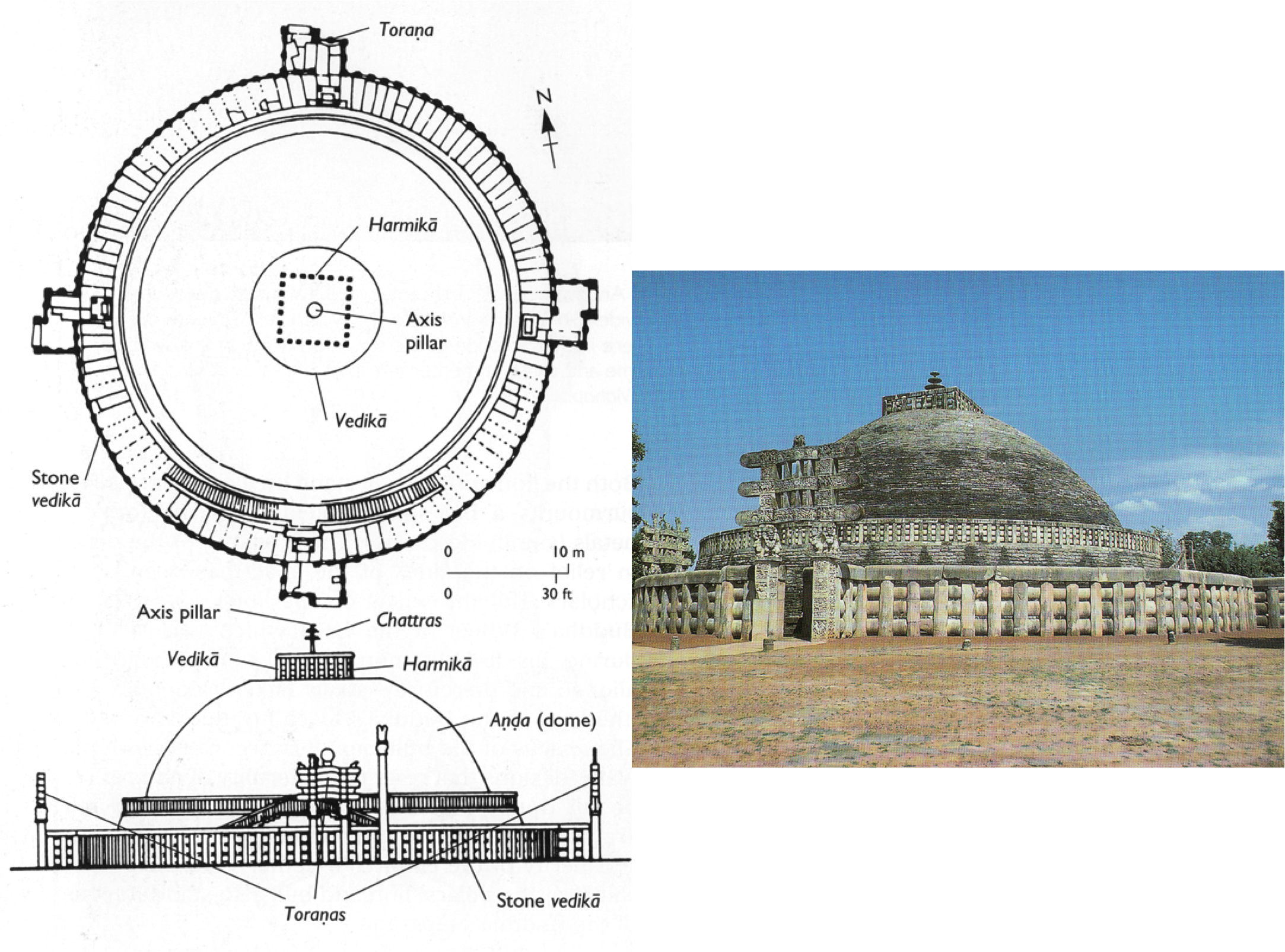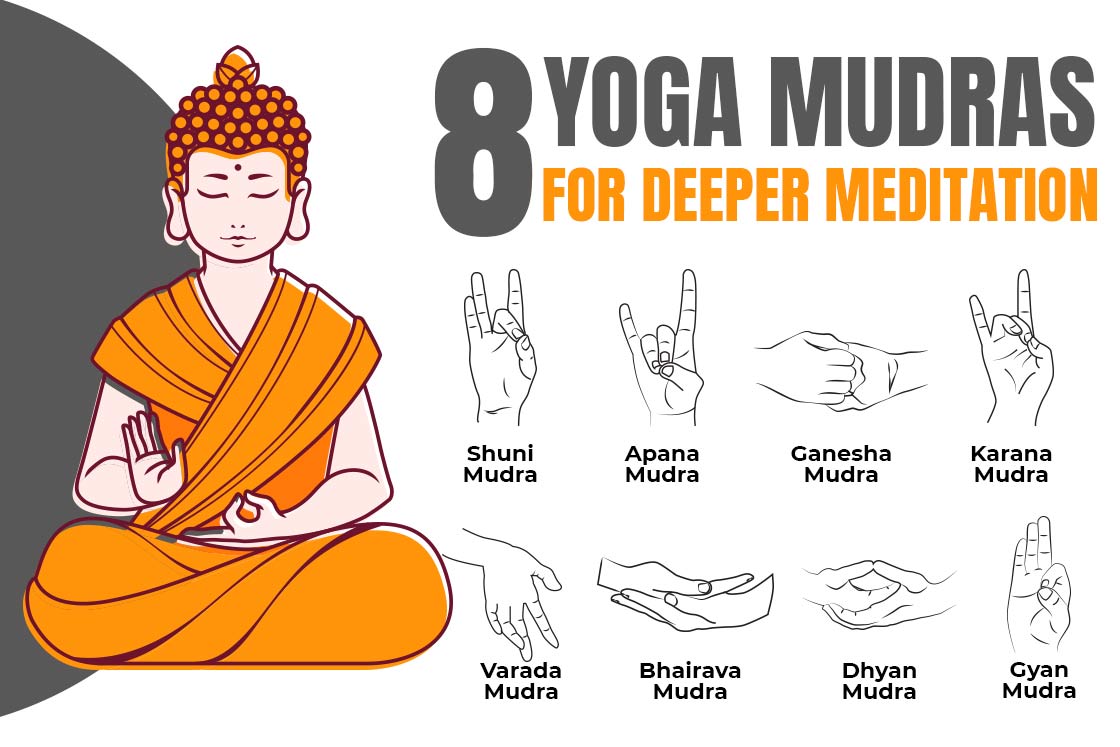A sensuous, full-bodied goddess that personifies fertility and vegetation
What is a yakshi?
A great circular mound that acts a monument to house relics of the Buddha
What is a stupa?


What is the Forbidden City, 15th century C.E., Beijing, China?
This dynasty in 1000 CE in India was responsible for the patronage of a massive amount of Hindu temples
What is the Chola Dynasty
A sacred diagram of the universe
What is a mandala?
The name for Japanese woodblock prints made during the Edo Period.
What is ukiyo-e?
This Chinese silk painting by Fan Kaun shows the absolute grandeur of nature and the people are insignificant in relation to nature
Fan Kuan, Travelers by Streams and Mountains, c. 1000 C.E., Song Dynasty, China
This temple has a garbha griha or womb chamber
What is the Lakshmana temple?

What is the Great Stupa at Sanchi?
What monogatari emaki begins with a solitary figures in calm before moving into a slowly building chaos reminiscent of cinema?
What is Night Attack on the Sanjô Palace?
The Tomb of Qin Shi Huangdi, the First Emperor of China has this many terracotta warriors
6,000
Hinduism is polytheisitic (many gods), but this word describes the various natures and how hindu deities can take many forms.
What is multiplicity?
This physical practice was to align religious practitioners to the cosmos
What is circumambulation?
The material used in Toda-ji that exemplifies the link between the natural environment, Shintoism, and Buddhism
What is wood?
The massive tomb complex of The First Emperor’s were built after the unification of China. They reflect these three things about his reign:
1. very high degree of organization
2. massive amounts of money and machinery
3. absolute power
A symbolic or ritual gesture or pose used by Hindus
What is a mudra?
The dry garden at Ryoan-ji demonstrates this Zen Buddhist practice
What is meditating to reach enlightenment?
The aesthetic of Rustic simplicity and Truth to materials
What is Zen Buddhism?
The sculptors for Army of the First Emperor of Qin used the same molds repeatedly for different parts of the statues but assembled the parts in many different combinations in order to convey these two Chinese values:
uniformity and individuality